READ: Through Bug Life Steps
From the discovery to resolution a defect moves through a definite lifecycle called the defect lifecycle.
Below find the various states that a defects goes through in its lifecycle. The number of states that a defect goes through varies from project to project. Below lifecycle, covers all possible states.
- New: When a new defect is logged and posted for the first time. It is assigned a status NEW.
- Assigned: Once the bug is posted by the tester, the lead of the tester approves the bug and assigns the bug to developer team
- Open: The developer starts analyzing and works on the defect fix
- Fixed: When developer makes necessary code change and verifies the change, he or she can make bug status as "Fixed."
- Pending retest:Once the defect is fixed the developer gives particular code for retesting the code to the tester. Since the testing remains pending from the testers end, the status assigned is "pending request."
- Retest: Tester does the retesting of the code at this stage to check whether the defect is fixed by the developer or not and change the status to "Re-test."
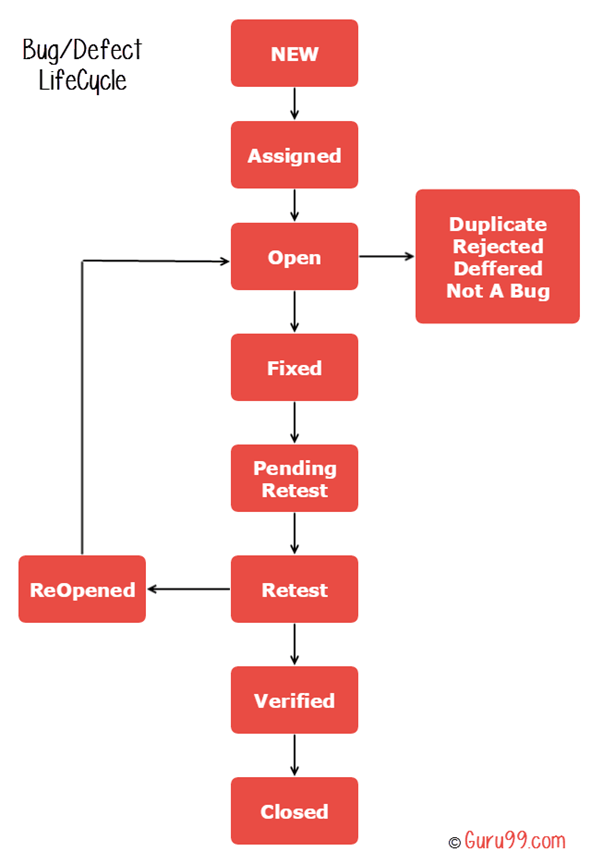
- Verified: The tester re-tests the bug after it got fixed by the developer. If there is no bugdetected in the software, then the bug is fixed and the status assigned is "verified."
- Reopen: If the bug persists even after the developer has fixed the bug, the tester changes the status to "reopened". Once again the bug goes through the life cycle.
- Closed: If the bug is no longer exits then tester assign the status "Closed."
- Duplicate: If the defect is repeated twice or the defect corresponds the same concept of the bug, the status is changed to "duplicate."
- Rejected: If the developer feels the defect is not a genuine defect than it changes the defect to "rejected."
- Deferred: If the present bug is not of a prime priority and if it is expected to get fixed in the next release, then status "Deferred" is assigned to such bugs
- Not a bug:If it does not affect the functionality of the application then the status assigned to a bug is "Not a bug".
Suppose we have a flight reservation application. Now in order to login into the webpage, you have to enter the correct password "Mercury".

Any wrong password entered for the login page will be addressed as a defect.

While testing the application, tester finds that an error pops out when a wrong password entered into the login page and assigned this error or defect as, NEW. This defect is then assigned to development project manager to analyze whether the defect is valid or not. The project manager finds that the defect is not a valid defect.
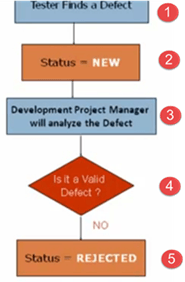
- Tester finds the defect
- Status assigned to defect- New
- Defect is forwarded to Project Manager for analyze
- Project Manager decides whether defect is valid
- Here the defect is not valid- status given "Rejected."
So, project manager assigns a status rejected. If the defect is not rejected then the next step is to check whether it is in scope. Suppose we have another function- email functionality for the same application, and you find a problem with that. But it is not a part of the current release then such defects are assigned as apostponed or deferred status.

Next, manager verifies whether a similar defect was raised earlier. If yes defect is assigned a status duplicate.
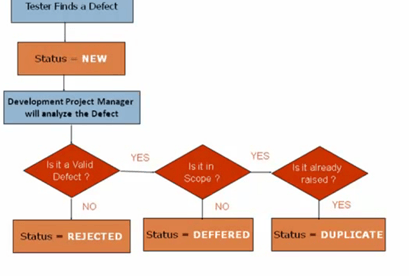
If no the defect is assigned to the developer who starts fixing the code. During this stage, the defect is assigned a status in- progress. Once the code is fixed. Defect is assigned a status fixed.
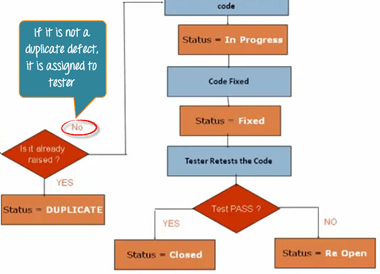
Next the tester will re-test the code. In case, the test case passes the defect is closed. If the test cases fails again, the defect is re-opened and assigned to the developer.
Consider a situation where during the 1st release of Flight Reservation a defect was found in Fax order that was fixed and assigned a status closed. During the second upgrade release the same defect again re-surfaced. In such cases, a closed defect will be re-opened.
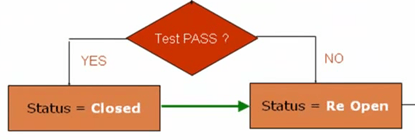
That's all to Bug Life Cycle.